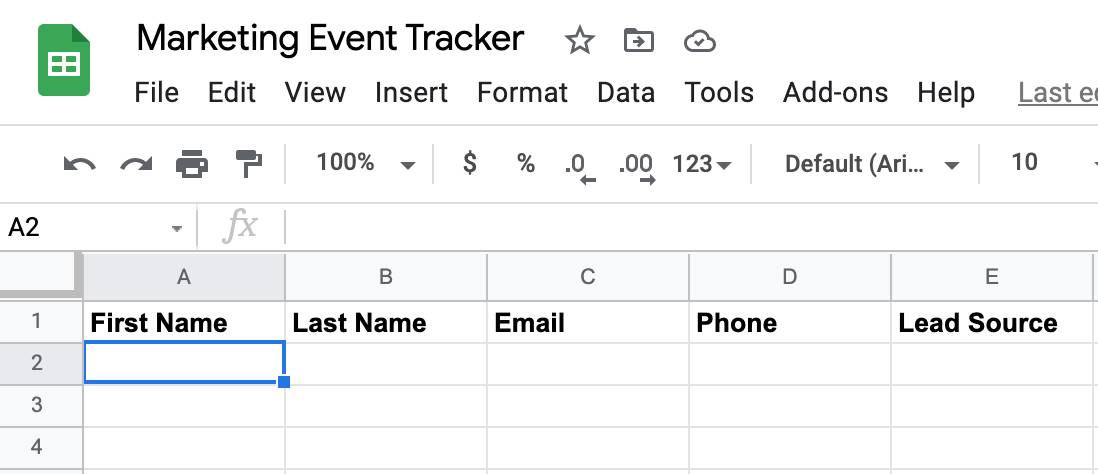Examine an Integration Use Case
Learning Objectives
After completing this unit, you’ll be able to:
- Describe the challenge of keeping campaign member data in Salesforce in sync with Google Sheets.
- Explain how to use MuleSoft Composer to sync campaign member data in Salesforce with Google Sheets.
- Prepare to create a flow.
Before You Start
This module builds on MuleSoft Composer Installation and Configuration, so make sure you've completed it before you continue. Recall from that module, you need to have the MuleSoft Composer User permission set if you want to build and run integration flows.
In this module, we assume you’re an authorized MuleSoft Composer user. If you’re not a MuleSoft Composer user, that’s OK. Read along to learn how they perform the steps. Don’t try to follow the steps in a Trailhead Playground, because MuleSoft Composer isn't available in the Trailhead Playground.
In this unit, you step into the role of admin for Northern Trail Outfitters (NTO), an outdoor and recreational gear retailer. First, you examine an integration challenge faced by NTO, and then you learn about a MuleSoft Composer integration solution. Finally, you learn how to prepare to create your flow.
Integration Challenge
Let’s take a look at an integration challenge NTO is facing. Your marketing team at NTO creates and maintains campaign member data in the NTO org’s Marketing Cloud Engagement. The team also tracks campaign member data for marketing events in a marketing event tracker spreadsheet in Google Sheets. The team needs to keep the campaign member data in Google Sheets in sync with Marketing Cloud Engagement.
Currently, the marketing team is performing these tasks manually. Every time a new attendee signs up for a marketing event, the marketing team creates a campaign member record in Marketing Cloud Engagement. Then, they create the same campaign member record in the marketing event tracker. Also, there’s a significant time lag between when the campaign member data is entered into the NTO org and when the same data appears in the marketing event tracker. This process is time-consuming and highly error-prone, so the team wants to automate it.
Integration Solution
As a solution, you need to automate the data sync between the NTO org’s Marketing Cloud Engagement and Google Sheets in order to achieve near real-time integration. To do this, you use MuleSoft Composer to create an integration flow that automatically syncs campaign member data in Marketing Cloud Engagement with Google Sheets. Specifically, the flow must perform the following tasks.
- Find any new campaign member created in the NTO org’s Marketing Cloud Engagement.
- Create the same campaign member in the marketing event tracker in Google Sheets.
To implement the solution using MuleSoft Composer, you need to perform these flow creation tasks.
- Prepare to create a flow.
- Design and test a flow.
- Activate a flow.
- Monitor and troubleshoot a flow.
You learn how to perform these tasks in the rest of this module.
Prepare to Create a Flow
Ready to get started?
First, you need to gather all required information about the systems and assets your flow is going to use. The following table describes the systems the flow needs to connect to and the information you need to have for those systems.
As a best practice, ensure the NTO org has a sandbox org you can connect to when you design and test your flows.
System |
Required Information |
|---|---|
NTO’s Marketing Cloud Engagement |
|
Google Sheets |
|
Next, ensure your Google Sheets account is ready to grant MuleSoft Composer the following permissions.
- See and download all your Google Drive files.
- View metadata for files in your Google Drive.
- See, edit, create, and delete your spreadsheets in Google Drive.
Finally, ensure the marketing event tracker spreadsheet has a header row. You can name the column headers whatever you want. As a best practice, give the column headers names that match the fields of the Campaign Member object in the NTO org whose data you want to sync with. For example, suppose you want to sync the fields, First Name, Last Name, Email, Phone, and Lead Source from the Campaign Member object in the NTO org with their corresponding fields in Google Sheets. Then, your marketing event tracker should look like this.

When your flow executes, the Google Sheets connector writes to the first available row in the spreadsheet, in this case, row 2.
You’ve taken the first steps to prepare to create your flow with MuleSoft Composer. In the next unit, you learn how to design and test your flow.
Resources
